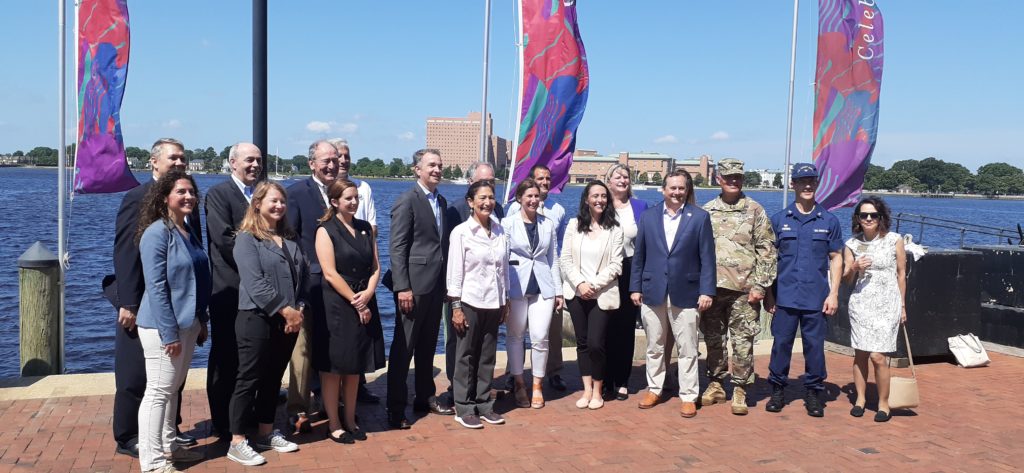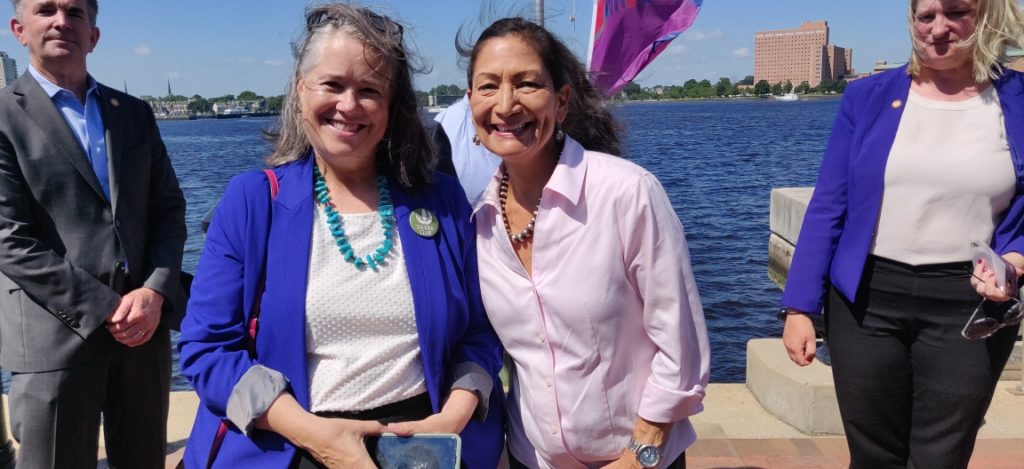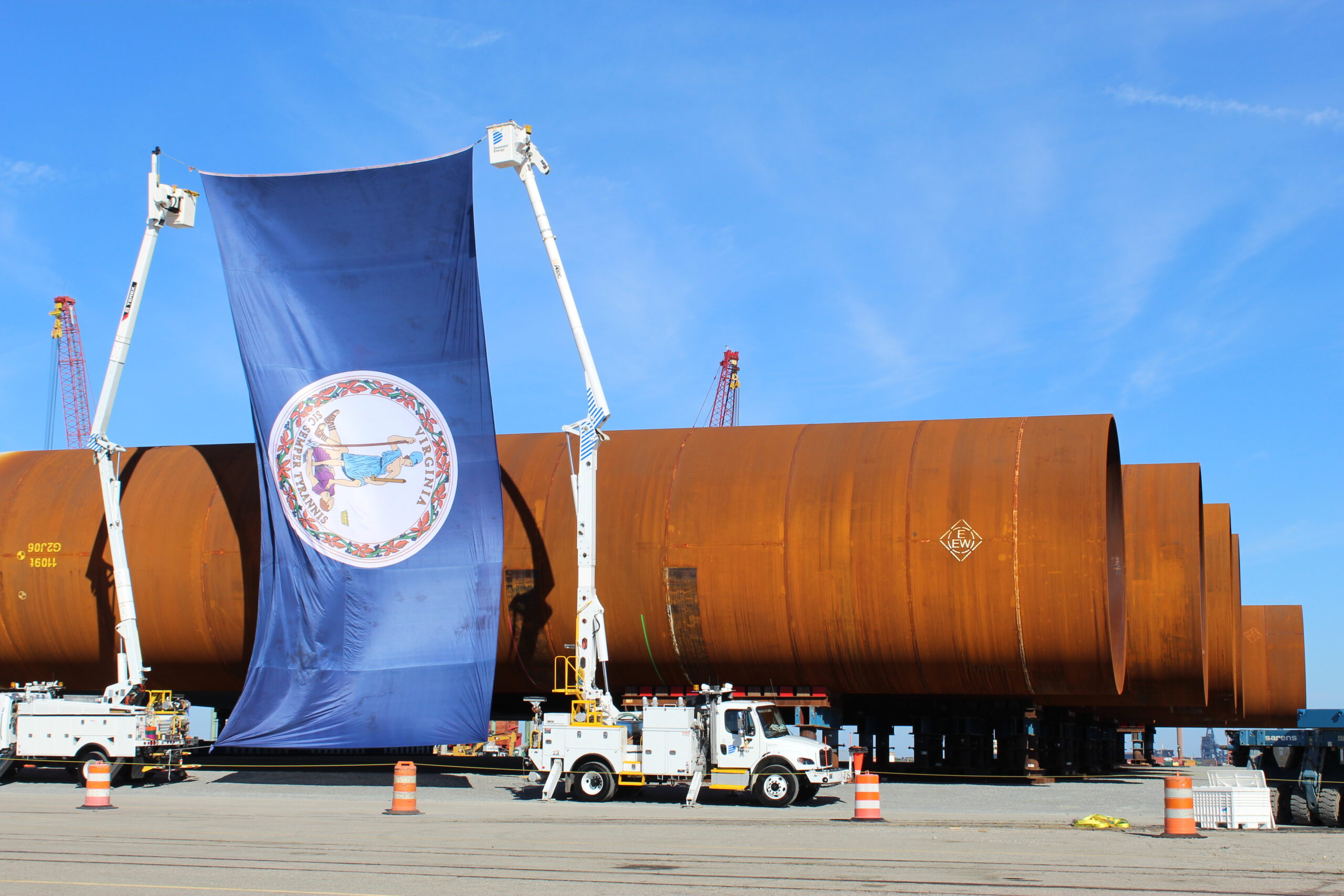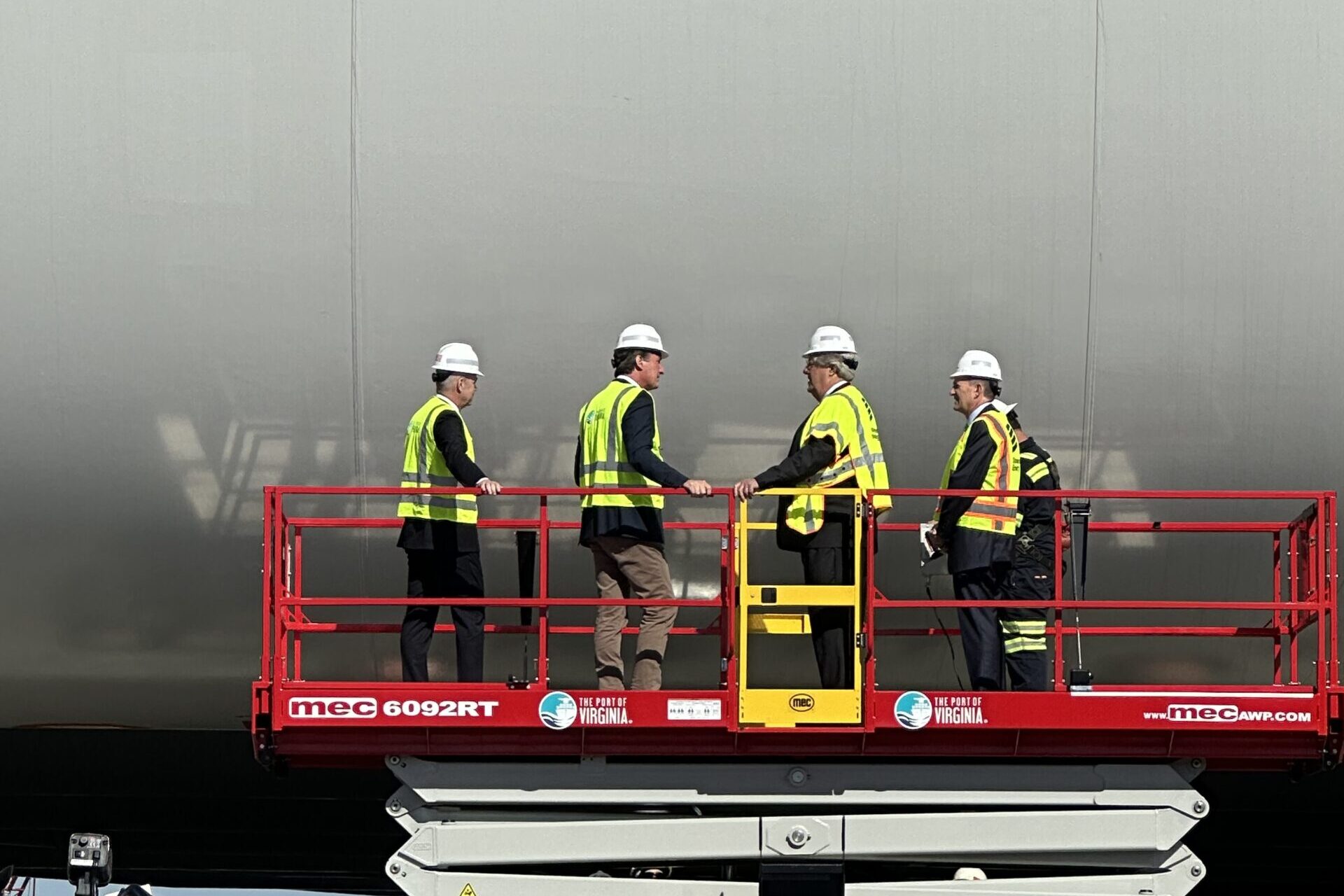Offshore Wind Energy Coming to Virginia in 4 Steps

In case you missed it – Secretary Haaland from the Interior’s Bureau of Ocean Energy Management (BOEM) joined Governor Northam and Senator Kaine for a press conference in Norfolk on July 1st to announce progress in Virginia’s offshore wind development. The development of the offshore wind project can be broken down into the following 4 steps:
1. Announce a Notice of Intent (NOI)
The big announcement came from Secretary Haaland through the issuance of a Notice of Intent (NOI) on July 2nd for Dominion Energy’s Coastal Virginia Offshore Wind (CVOW) project. What does that mean? The NOI is the first major milestone in the federal permitting of the massive wind project, previously held in limbo through the Trump administration.
The NOI kickstarts the 2.6 gigawatt wind project, which is the largest planned offshore wind project in the United States. The project builds upon the 12-megawatt CVOW pilot wind farm, where two test turbines were installed in 2020. The additional wind energy brings us one step closer to the state’s goal of 5.2 gigawatts of offshore wind by 2034 and the state’s plan to use 100% Clean energy by 2050 as described in the Virginia Clean Economy Act.
“Building a domestic offshore wind supply chain is a key step needed to meet this administration’s goal of 30 gigawatts by 2030.” – Amanda Lefton, BOEM Director
2. Develop an Environmental Impact Statement (EIS)
The NOI launches the first step for a 2-year environmental review of CVOW through an Environmental Impact Statement (EIS) by the BOEM.
The NOI for the EIS comes at a great time. VCN partners and others are not without reservations about the CVOW project. The sheer size of the project requires additional infrastructure for creating wind turbines and delivering the generated energy. As with any building out of large infrastructure there is the possibility of unintended environmental consequences – in this case, the disturbance of conservation habitats is of particular concern. Furthermore, infrastructure development tends to disproportionately impact vulnerable communities who are already overly-burdened with environmental pollution such as vehicle exhaust in the air, toxic waste spills, and water contamination.
But, this massive source of clean, renewable energy will take us leaps and bounds forward in the fight against climate change. Displacing 2.7 gigawatts of fossil fuel energy will mean less carbon dioxide in our atmosphere, reduced need for fossil fuel infrastructure such as pipelines, and reduced amounts of fossil fuels and byproducts which could leak into our water sources.
A well-drafted EIS will not only reduce the possibility of any potential negative impacts on our environment and our communities, but also uplift these vulnerable communities.
3. Conduct a Comment Period
Now that the NOI is posted in the Federal Register, the public has 30 days to make comments on the NOI. The 30-day public comment period extends through 11:59 p.m. Eastern time on August 2, 2021.
Through this period, BOEM will hold three virtual public scoping meetings to gather public input. The public input will help BOEM find important community and environmental issues as well as reasonable alternatives or mitigation methods, which will be analyzed in the EIS. These meetings will be held at the following times:
- Monday, July 12, 2021, 5:00 p.m.
- Wednesday, July 14, 2021, 1:00 p.m.
- Tuesday, July 20, 2021, 5:00 p.m.
4. Participate!
The most important step for this phase of offshore wind development in Virginia – PARTICIPATE! Everyone is able to rally attention and support around the start of a project’s permitting journey. It is also often the first formal opportunity to raise potential concerns with a project, and call BOEM’s focus to areas that need extra scrutiny. For anyone skeptical, scoping meetings are a great place to get questions answered.
Looking Ahead
- Within 2 years of the NOI: BOEM will issue the Draft Environmental Impact Statement , which will open up another comment period and typically five public meetings.
- No more than 2 years after the NOI: BOEM will incorporate comments from public hearings and issue a Final Environmental Impact Statement (FEIS).
- 30 days following the FEIS: BOEM will issue a Record of Decision, determining whether the project can go forward.
Thank you to our partners who have been working diligently on bringing clean offshore wind to Virginia, including Sierra Club Virginia Chapter and Southern Environmental Law Center.



